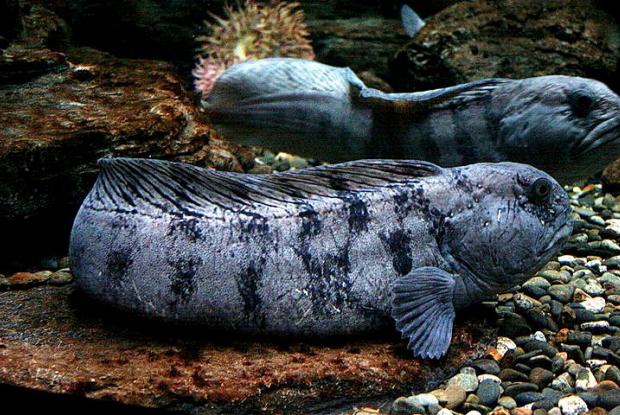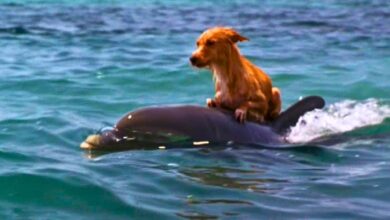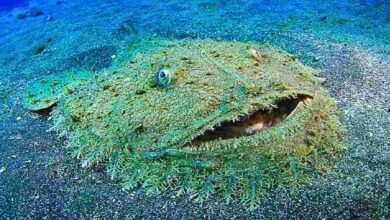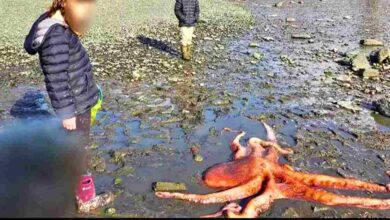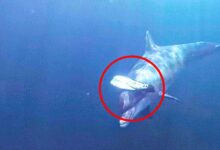These Creepy looking Atlantic Fish are Actually Super Friendly to Humans

The wolffish has the face only a mother could love, but it’s surprisingly affectionate. And it produces antifreeze.
The only thing the Atlantic wolffish (Anarhichas lupus) has common with wolves is that it has sharp teeth and a strong jaw to help it rip apart its prey. Its teeth are so prominent, in fact, that some even poke out of its mouth, giving it an appearance that is creepy and funny at the same time – at least by human standards.
But those enormous chompers have a purpose. The fish uses them to dig into the sediment on the ocean floor for food and break the hard shells of crabs, urchins, clams and more. Besides its teeth, the Atlantic wolffish can be recognized by its long, eel-like body.

Found both on the west and east coasts of the Atlantic Ocean, this fish is a benthic dweller, living on the hard ocean floor at around 2000 ft and frequently seen in nooks and small caves. And it has a special trick! Its system produces antifreeze to keep its blood moving fluidly. It needs it too, as it lives in water temperatures of −1 to 11 °C.
And that’s not the only thing that makes this creature so unique!
While most fish species “broadcast spawn” (with females releasing thousands of eggs into the water, and males competing to fertilize them externally), wolffish pair up and fertilize the female’s eggs internally, which means they mate much in the same way mammals mate! And the relationship doesn’t end there.

Depending on the water temperature, the female incubates the eggs for four to nine months and then lays them in large clusters. After that, the male aggressively protects the eggs for about four months until they hatch.
Despite their creepy looks, these fish are very affectionate towards humans! And for this reason, some divers actually look for them and often befriend their local wolffish. Well, look at this.
Truly a remarkable species.
